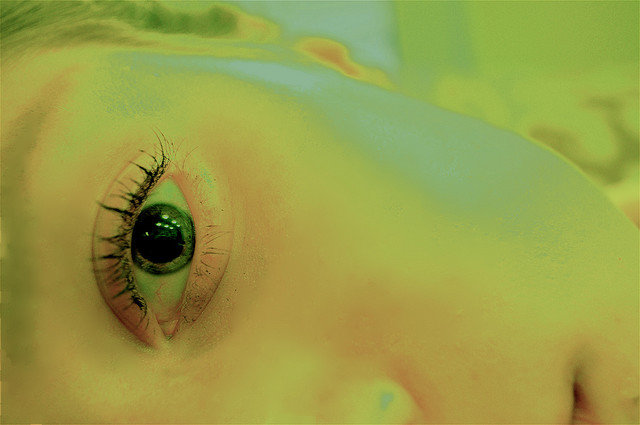How to calm down alarmist skin? The problems of hyper-reactive skin

Stinging, itchiness, marks, acne – this is how hyper-reactive skin shows its disapproval when we expose it to a new body product, laundry powder or even tap water. It’s really hard to soothe alarmist skin, yet luckily it’s possible. How to take care of sensitive skin and how to distinguish allergy-prone skin form couperose skin?
This is me, the sensitive skin
Hey, it’s me – sensitive skin. They call me an alarmist because I overreact to everything that I happen to be in contact with. I loathe chlorinated water, cosmetics that have some aggressive substances and rapid temperature fluctuations. Whereas other skin types adapt easily to new conditions, I start itching, stinging, become tight or cover myself with spots and acne. Why? My mom says that my protective mechanisms are disturbed because my epidermis isn’t sufficiency moisturized or because my hydro-lipid barrier has been damaged by ill-chosen cosmetics, but honestly I’m not sure what this means. What I know though is that I overreact the very moment I’m in contact with a nasty substance (my mom calls it an “irritating” substance).
You’re happy that your face isn’t cursed with sensitive skin, aren’t you? Sadly, I have to upset you: each one of us – you, dry skin, and you, oily skin – can become sensitive. Sensitivity can be an acquired characteristic. For example, when in contact with an irritating agent, dry skin reacts with intensified dryness, stinging and red marks, whereas combination and oily skin start stinging, flakes and develops big red marks.
Such adverse reaction to external factors touches mainly those whose complexion is pale and hair is fair. Yet, this doesn’t mean that all brown-haired people are safe.
How to distinguish sensitive skin from allergy-prone skin?
Speed at which the reaction to irritating substance is developed
Sensitive skin reacts to irritating substance almost immediately, whereas allergy-prone skin needs 12-72 hours to inform you that it doesn’t like the substance you exposed it to.
Types of irritating substances
Allergy-prone skin is just one out of the whole range of symptoms of allergy, which in fact is a disease affecting the entire body and is the consequence of disturbed immune system. Although the reaction of allergy-prone skin seems to be identical to the reaction of sensitive skin, the former can be irritated by far more agents. Another issue worth realizing is that sensitive skin hyper-reacts only to some cosmetic constituents and cleaning supplies that it’s in contact with as well as to changes of weather and water, which in fact can be summarized in a following way: sensitive skin reacts to everything that becomes in physical contact with it, whereas the signs of allergy include also food products, pollen, dust mite, fur and animal faeces.
Since the agents triggering allergic reactions are so numerous, and since allergy-prone skin has delayed reaction, it’s really hard to be precise in determining the allergen. In order to do this, you have to start putting away one allergen at a time. Moreover, defining the irritating substance is just the first step to curing the allergy. The next steps include finding the replacements for the beauty products we’ve been using so far and starting a pharmacological therapy. In the case of sensitive skin, it’s far easier to determine why the adverse reaction in skin was developed.
How to distinguish sensitive skin from couperose skin?
Couperose skin is sensitive – if not hypersensitive – and on the top of that both skin types react to some irritating agents alike (in most cases it’s redness). In the case of couperose skin, this reaction is developed only when the skin is exposed to adverse weather conditions (frost, wind, sudden temperature fluctuations) and factors that imitate weather conditions such as the air coming from A/C vents. Additionally, sensitive skin reacts adversely to irritating substances in many ways (the mentioned earlier itchiness, stinging, tight skin, redness, acne and marks) whereas allergy-prone skin develops only redness and broken capillaries.

SPF: Most Common Mistakes. Don’t Make Them!
Summer is coming! You’ve probably already planned everything: what places you’re gonna...
10 Crazy (Yet True) Facts about Natural Oils
Everybody knows and uses oils. Sunflower oil, rapeseed oil, olive oil are used in the kitchen. However,...